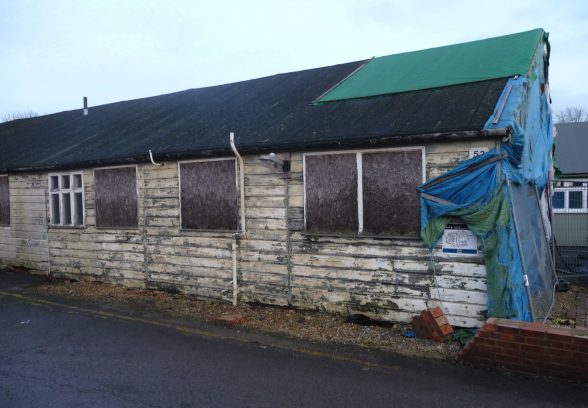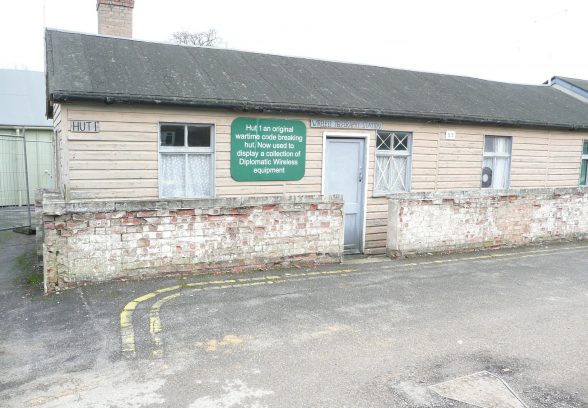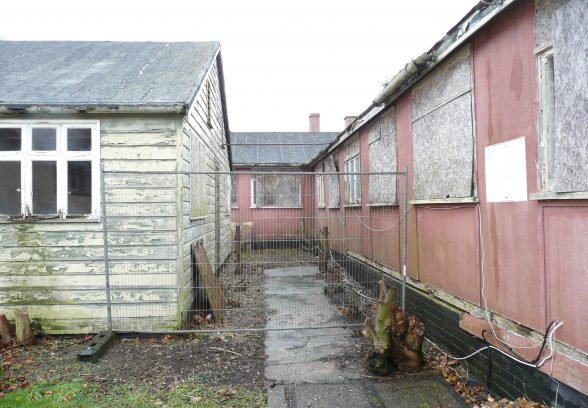This website uses cookies
This website uses cookies to enable it to function properly and to analyse how the website is used. Please click 'Close' to accept and continue using the website.





March 2011 - Bletchley Park, Milton Keynes
by Roland Jeffery
Bletchley Park was at the outbreak of the Second World War in rural Buckinghamshire, beside a small sleepy railway town which was to become part of Milton Keynes. The estate had been purchased by the Government Code and Cipher School, its staff masquerading as ‘Capt. Ridley’s Shooting Party’ to conceal the intent of the purchase. It was 1938 and the Munich crisis made war seem increasingly certain. The secret decades at Bletchley Park had begun. The activity to intercept enemy communications and in particular to break the German Command’s ‘Enigma’ codes was one of the best kept secrets of the war and the site was as mysterious in the post-war years when the organisation that became GCHQ was born there.
In the 1970s the stories of Bletchley began to leak out, at first in unreliable and anecdotal form, then as corroborated and remarkable narratives, becoming one of the most celebrated stories of the British war effort. That the mathematicians and engineers succeeded and were able to eavesdrop on the enemy was a truly a heroic achievement. Later, the adoption by the Nazis of the even more strongly encrypted Lorenz codes prompted the completion in 1943 at Bletchley of the world’s first realised programmable electronic computer: Colossus. It anticipated American models by more than a year.
As Milton Keynes expanded in the 1970s the site was very nearly cleared wholesale for a housing estate. Its rescue from oblivion is peculiarly British story of activists, many of them veterans of Bletchley Park, championing its cause and, against all the odds, winning the day against quangos and bureaucracy. Some of them formed Bletchley Park Trust, the charity that now owns the site.
Once war was declared the Mansion at Bletchley Park was soon outgrown. Erected hastily in 1939 the early phase of wooden huts at Bletchley were cheap, quick to build, far from beautiful and not necessarily that efficient as accommodation.
By 1940 Bletchley was growing at the pace of 50 members of staff a day and much larger buildings were needed. Brick built, steel framed, concrete roofed ‘spider blocks’ were built on a much larger scale. At the height of its wartime activity as many as 5,000 staff were working at Bletchley Park, in three shifts a day, most being ferried by a fleet of 111 buses running to and from outlying billets. Some of these larger brick buildings from the later years of the war also survive.
Some of the work in these huts were intellectual breakthroughs by mathematicians and linguists of genius; but much of it was the astonishingly meticulous and relentless daily work involved in intercepting, decoding and recording (on a truly mammoth card index) hundreds of thousands, perhaps millions, of messages; intelligence is built by constructing a picture of the normal methods of the enemy at least as much as by spotting the unusual. The poignancy of the earliest huts is perhaps the most powerful relic on the site for the paradoxes they embody. They housed, cheek by jowl in a comradely wartime spirit, staff who worked both on the utterly routine and the loftily inspired.
The huts are very ordinary buildings, but now listed. They retain some of the interior fittings from the 1940s but most were adapted and significantly altered in post-war years, as utilitarian sheds often are. They do not display structural innovation or unusual planning and are frankly pretty ugly; but their historic significance is international. It is important to preserve them for what they are, yet as witnesses to wartime achievement they need to be seen by the public and thus made safe for visitor access.
So, the huts represent conservation conundrums of some complexity. The first is whether the usual precept of conserving as much as possible of the fabric can be adopted. Much of their timber is rotten and replacement will be required for safety and the security of the displays. Will they need to be strengthened with steel as has happened already to many of the wooden huts, and if so should such upgrading be visible or concealed? As the site today receives more than 100,000 visitors a year it must meet fire and safety requirements. Doing this while keeping the wartime appearance will be a challenge. The atmosphere of the huts is as much to do with fixtures like the light fittings and radiators; so, can salvaged wartime vintage fittings be sourced and installed without the huts looking like stage sets? The narrow doors and corridors are not accessible to those with limited mobility (let alone in wheelchairs) and are likely to cause congestion; but the very congestion of the spaces are strongly redolent of the wartime need to maximise useful floorspace. According to veterans the huts were always cold in winter and far too hot in summer; should they be made to accommodate modern concerns like visitor comfort and carbon footprint?
A conservation management plan by Kathryn Sather Associates has indicated the variety of approaches which could be appropriate, dependant on the significance and use of each hut. A repair strategy is being worked out by architects Kennedy O’Callaghan and engineers Alan Baxter Associates to maintain the Second World War appearance. Museum designers Event are tasked with capturing some of that most fugitive of qualities, ‘atmosphere’, in at least some of the buildings.
Roland Jeffery is project managing the restoration of Bletchley Park. He works for The Prince’s Regeneration Trust, who act as consultants to site’s owners, Bletchley Park Trust. For information on visiting the site seewww.bletchleypark.org.uk
Look for past Buildings of the Month by entering the name of an individual building or architect or browsing the drop down list.

Become a C20 member today and help save our modern design heritage.